Spoons come in a variety of sizes, forms, and styles, as well as a variety of materials, to ensure that they do their job as well as possible. The most prominent and historically important styles are discussed below.
Based on the purpose of use, we can be divided into 4 main different types of spoons:
- Types of spoons for eating.
- Types of spoons for cooking & serving.
- Types of spoons for special.
- Features of spoons.
In addition, there will be some types of spoons used in other special things that we will learn together today.
Let's see which types of spoons you already know below.
Types of spoons for eating
Spoons for eating are almost always named after the food for which they are intended to be used.
Absinthe Spoon
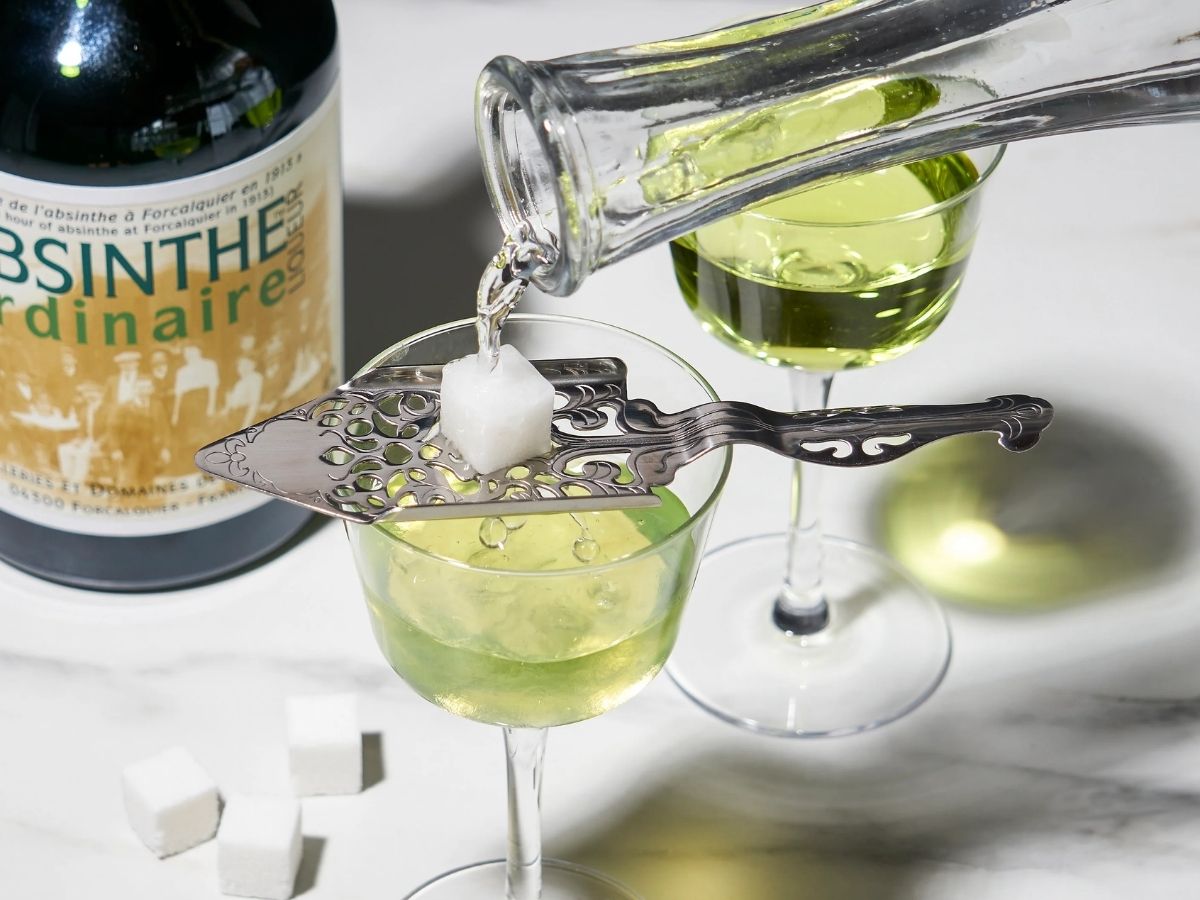
This is a very unique type of spoon created specifically for absinthe drinkers. They are either perforated with holes or slotted, so when you stir your drink you create a lot of little currents in the liquid.
This is great for dissolving the sugar cube that is dunked in using the utensil. The bowl end is long and flat, enough to reach over the glass and rest on it, held stable by the notch built into the bottom of the handle.
Avocado Spoon
A spoon with a curved blade designed for easily scooping out avocado flesh from its skin.

A spoon with a curved blade designed for easily scooping out avocado flesh from its skin.
Appetizer Fork and Spoon Set

A pair of small utensils, often used together, for serving and enjoying appetizers.

Read this article: 194+ Handmade Wooden Spoon and Fork Collection of 194 Craft House
Butter Spreader

A small, flat utensil with a broad blade, is used for spreading butter or other spreads onto bread.
Chinese spoon

Chinese Spoon is commonly seen in various types of oriental restaurants and has a shorter and thicker handle that leads to a deep bowl with a flat bottom.
The spoon is not the regular spoon we use in Western dining. It is a flat-bottom spoon with a pointed front end and a short handle. Some call it a Chinese spoon, a Chinese soup spoon, an Asian spoon, or a duck spoon.
Whatever you call it, the spoon is commonly used in three ways – to sip liquid like soup, to assist chopsticks when tackling an ingredient-packed noodle soup, and to discreetly get small bones from your mouth to a plate when eating food like chicken feet.
The flat bottom spoons are usually bigger than western spoons and can hold more liquid, which is handy for eating Asian soups which usually have noodles or large chunks of vegetables and meat in them.
Using a Western spoon, there’s too little room to fit in both the solid ingredients and the broth. But with a larger Chinese spoon, you can get some noodles, vegetables, and still plenty of broth on the spoon.
Since Chinese spoons are usually made of ceramic, they tend to keep their handles cool when immersed in piping-hot soup.
They are typically made of ceramic and they are less likely to burn your mouth than a Western metal spoon may.
Cereal Killer Spoon

A spoon with a slightly larger bowl, is often used for eating breakfast cereals.
Korean Spoon

Korean spoon also known as Sujeo (수저), is the Korean word for the set of eating utensils commonly used to eat Korean cuisine.
Cases of Sujeo on paper or Korean fabrics were often embroidered with symbols of longevity and given as gifts, particularly at weddings. They are now sold as souvenirs.
Why are Korean spoons longer than Chinese and Japanese spoons?
It's acceptable to pick up your bowl in Chinese and Japanese culture, but considered rude to do so in Korean culture (What's wrong? Are you in a hurry to leave or something? The food is that bad that you have to shovel it up like a barbarian? Am I so bad you wanna get out of here ASAP?)
So Korean culinary utensils and vessels evolved to fit their culture. Long spoons help the user scoop food and soup into their mouths in an efficient and elegant way.
The spoon may be laid down on the rice bowl, or soup bowl if it has not been used. As food is eaten quickly, and portions are small, little time is spent putting eating utensils down.
Sushi Spoon

A small, flat spoon used for scooping and serving sushi rice.
Soup Spoon

A soup spoon is a type of spoon with a large or rounded bowl. These are similar to a ladle but scaled down to a dinner spoon size with a horizontal handle. Their larger round bowls are meant for eating thin soups.
Soup spoons come in various shapes and sizes, each designed for specific purposes and cultures. Here are some common types of soup spoons:
Asian Soup Spoon

Commonly used in Asian cuisines, especially in Chinese, Japanese, and Korean traditions. These spoons have a shallow and wide bowl with a flat bottom, making it easier to sip and hold small amounts of broth or soup.
Bouillon Spoon

A smaller version of the table soup spoon, a bouillon spoon is intended for soup, traditionally for clear, broth-based soups, as its name implies, and for jellied soups such as madrilene. It is a round-bowled spoon, rather than oval-bowled, its curve designed to fit the rounded edge of a soup bow that exposes more surface area of the clear, broth-based soup for faster cooling.
Bouillon spoons have short handles, typically between 5 and 5-1/2 inches long. The round bowl of the bouillon spoon is too wide to fit comfortably in the mouth, so soup is actually sipped from the side of the bowl. The bouillon spoon is slightly more formal and more appropriate for soup than a teaspoon, although many restaurants and homes purchase teaspoons since they can perform double duty. But when you want to raise the dining experience up a notch and you serve a clear or jellied soup, consider bouillon spoons.
A bouillon spoon would not be appropriate for use with a heavy stew or soup that is served as a main course, but for smaller portions or side dishes, it is ideal. If you serve sandwiches with a small bowl or cup of soup, the smaller bouillon spoon is more compatible with the cup's size, rather than the more formal, and larger, standard oval-bowl soup spoon. Add that extra detail to your customer's dining experience and offer soups with bouillon spoons.
Curry Soup Spoon

A large, flat spoon with a wide bowl, used for serving curries and rice in Indian cuisine.
Cream Soup Spoon
A typical soup spoon (also called a cream soup spoon) is the approximate size of a dessert spoon, and in some restaurants and homes, it is used for both soup and desserts.
Smaller than a tablespoon, a soup spoon has a deeper, round bowl, making it ideal for obtaining a mouthful of soup, although the bowl's width may be too much for fitting in the mouth. Proper use of a cream soup spoon requires sipping soup from the side of the spoon.
Note that an average soup spoon is approximately 6 inches long, although it can be as long as 8 inches, depending upon the manufacturer and the pattern.
Table Soup Spoon

This is the most common type of soup spoon found in Western dining. It is a medium-sized spoon with a rounded bowl and a long handle, suitable for general soup consumption.
Ramen Spoon

Used specifically for eating ramen in Japanese cuisine, these spoons have a deep and round bowl, perfect for capturing broth and toppings.
It's worth noting that the naming and design of soup spoons can vary across different cultures and regions, so you may encounter additional variations depending on the dining customs of the specific area you're in.
Gumbo & Chowder Spoon

For thicker soups with meats and vegetables in them, a gumbo spoon is a great choice. They're traditionally around 7 inches in length with a much larger bowl than a teaspoon.
This bowl is shallow and perfectly round, again allowing for big scoops and more surface area to allow for cooling of the soup before taking it in your mouth.
Coffee Spoon

A "coffee spoon" typically refers to a small spoon that is used for stirring and adding sugar or cream to coffee or other hot beverages. It's smaller than a regular teaspoon and is designed to fit well in coffee cups and mugs.
Coffee spoons are often made of metal (such as stainless steel) or other materials and may have decorative or ornate designs. They serve both a practical purpose in preparing and mixing beverages and can also be considered a part of tableware or cutlery used for serving coffee.
In addition, we also have coffee beans or coffee powder scoops for making coffee. In recent years, people often use this wooden spoon to be environmentally friendly and decorative.
Read this article: How to Clean and Care for Wooden Utensils?
Coffee Scoops
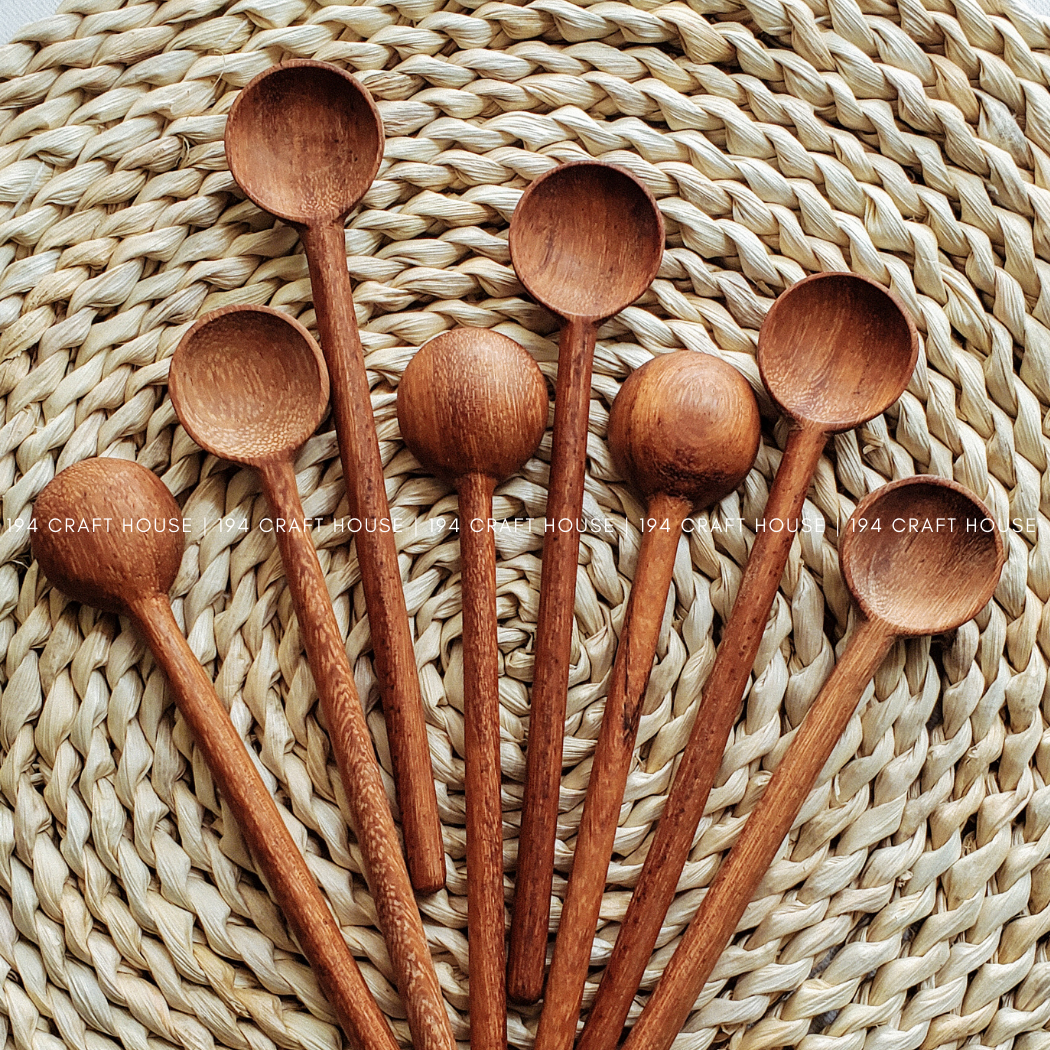
Handmade Wooden Coffee Scoop Spoon
A coffee scoop is a small utensil or tool designed specifically for measuring coffee grounds. It is commonly used to ensure consistent and accurate measurements when brewing coffee.
Coffee scoops typically come in various sizes, with the most common being designed to measure one tablespoon of coffee grounds, which is a standard coffee-to-water ratio for brewing.
These scoops can be made from different materials such as plastic, metal, or wood. They often have a long handle for easy handling and a scoop-shaped end to hold and transfer the coffee grounds. Some coffee scoops also have measurement markings on the scoop itself, allowing users to measure different amounts of coffee depending on their brewing preferences.
Using a coffee scoop helps coffee enthusiasts maintain consistent flavor and strength in their brewed coffee, as using the right amount of coffee grounds is crucial for achieving the desired taste and aroma.
Cutty spoon

Cutty is a Scottish, Irish, and British term meaning "shortened and stubby." These are shorter in length, often so short that the handle is as long as the bowl itself.
We, as in humanity, aren't sure what the true origins or uses of these are. They're simply a historical curiosity that's worth mentioning.
Demitasse Spoon/ Condiment spoon
Demitasse spoons are a type of flatware typically used in European countries and the United States.
These are even smaller than coffee spoons (which are smaller than teaspoons). These dainty and delicate little spoons measure approximately 3 to 4 inches (7.62 to 10.16 cm).
Tea or coffee drinkers often use them in conjunction with teacups and saucers. They are used to stir sugar, milk, or cream into a hot beverage, particularly ones with a froth top like a cappuccino, so it can be scooped and tasted alone.
Afterward, they can be set to rest in the saucer or used to eat a dessert-like custard or sorbet.
At stores and restaurants, they're usually plain polished silver or stainless steel (or even plastic), though home coffee brewers will often purchase one with an ornate handle.
Dessert Spoon

A dessert spoon is a spoon designed specifically for eating dessert and is sometimes used for soup or cereals. Similar in size to a soup spoon (intermediate between a teaspoon and a tablespoon) but with an oval rather than a round bowl, it typically has a capacity of around twice that of a teaspoon.
By extension, the term 'dessert spoon' is used as a cooking measure of volume, usually 10ml or 1⁄3 fl oz.
While not used every day by all people, they are very commonly included in formal table settings. When setting a formal table, it is common for the dessert spoon to either be brought in with dessert or to be placed above the plate, completely separate from any other utensils on the table.
Egg Spoon

An egg spoon is a specialized spoon for use in eating boiled eggs. They have a shorter handle and a shorter bowl to allow for easier scooping inside the stand. The bowl is rounded, as opposed to a typical teaspoon.
These characteristics are designed to facilitate the removal of an egg's contents from the shell, through a small hole in one end. For this purpose, the egg spoon is intended to be easier to use than a teaspoon. In practice, the difference can be unnoticeable, especially when eating a large egg. As a consequence, boiled egg spoons are not common in either modern or antique flatware/cutlery services. Nevertheless, the diminutive size of a boiled egg spoon makes it well suited to small eggs.
Because the sulfur in eggs causes silver to tarnish, good silver egg spoons will have a gold wash over the bowl of the spoon. Egg spoons can also be made of wood, horn, porcelain, and stainless steel as well as any other material that does not react to the sulfur in eggs.
French Sauce Spoon/ Saucier Spoon

As its name implies, this was created by the French in 1950 in order to eat sauce.
A French sauce spoon looks much like a regular spoon with some noticeable differences. It has a thinner edge, a flattened bowl, and a distinctive notch on one side of it. The size and shape are most similar to that of a dessert spoon. Sometimes it's called a saucier spoon.
The French sauce spoon design helps scoop a sauce from a plate easily, without tipping the plate. The purpose of the notch on the side is intended to allow oil or fat to drain away from the sauce, or function in a way that’s comparable to the fish knife.
Iced Tea Spoon

While a tall glass of sweet iced tea may be a refreshing part of a hot summer day, a standard teaspoon would just not be suitable for stirring one. Since the glass is just as deep as most standard teaspoons are long, it would make for possible wet fingertips.
Thus, the iced tea spoon is a creative and fun solution. A long utensil ranging from at least 7 inches to 10 inches in length, the iced tea spoon has a relatively small bowl, similar in size to a standard teaspoon, but with a much longer handle.
Originally used for stirring iced teas, they were also used in the heyday of soda fountains. With the resurgence of handcrafted sodas and phosphates, many food service operations rely on iced tea spoons. They are even popularly used for eating ice cream sundaes served in tall, deep sundae glasses.
An iced tea spoon is a part of informal dining, not often included in standard place settings. However, with a variety of patterns and styles to choose from, you may wish to supplement your food service establishment's table settings with a decent quantity of iced tea spoons. An iced tea spoon says to your customers that this beverage or dessert is fun.
Marrow Spoon

A marrow spoon is a specially designed spoon that is engineered to help consumers get the marrow out of bones. Bone marrow is a popular delicacy, especially in Europe, and this rich, flavorful meat product can be cooked and served in a wide range of ways. When it is served in the bone, a marrow spoon, sometimes called a marrow scoop, is essential.
You don't see these much anymore since we don't eat marrow right out of a bone often, but they're out there. They were common in the 18th century, usually made of silver and featuring a long and thin bowl to fit inside the bone.
This piece of esoteric silverware looks a bit strange, but it does the job quite beautifully.
Parfait Spoon

These are specifically designed to be used for eating parfait, sorbets, sundaes, and other similar desserts that are served in tall glasses. Due to this, they feature a very long, slim handle leading to a typical teaspoon-shaped bowl.
Puff pastry spoons

Puff pastry spoons are a delightful and elegant appetizer that will impress your guests. These bite-sized spoons are made with flaky puff pastry and filled with a variety of delicious toppings, from savory to sweet.
They're perfect for any occasion, whether it's a fancy dinner party or a casual gathering with friends.
Making puff pastry spoons is surprisingly easy and requires only a few ingredients: puff pastry, egg wash, and your choice of filling.
The possibilities for fillings are endless, but some popular options include smoked salmon and cream cheese, caramelized onions and goat cheese, or Nutella and fresh berries. With their crispy texture and delicious flavor, these puff pastry spoons are sure to be a hit at your next gathering.
Rattail Spoon

These were created in the late 17th century. They feature a reinforcement from the bottom of the bowl to the handle meant to reinforce the joint between the bowl and handle. The reinforcement is a thin tongue that comes to a point.
Strawberry Huller Spoon

A spoon with a pointed, scoop-like bowl, is used for removing the stems and hulls from strawberries.
Salt Spoon

A salt spoon is a miniature utensil used with an open salt cellar for individual service. We've replaced them with salt shakers, obviously.
But the salt spoon itself is a miniature spoon like the caviar ones. The spoon itself ranges from 2 to 3 inches (5 to 7.5 cm) long and has a circular bowl measuring approximately 0.5 to 0.75 inches (1.25 to 2 cm). They can be found in a wide range of materials including glass, Sterling silver, plastic, wood, ivory, bone and shell.
Spork / Sporf / Spife / Splayed
These goofy things are a combination of multiple eating utensils, like a spoon and a fork (spork), a spoon, fork, and knife (sporf), a spoon and a knife (spife), and again a spoon, fork, and knife (splayd).
People use these the most when hiking and camping, from my experience. There are other combinations like forkchops and a chork.
Stroon / Straw Spoon

In this glorious age of various dining utensils, all merging together in unity, like Sporks (spoon + fork), Knorks (knife + fork), and Chorks (chopsticks + fork), along come these cool new Spoon Straws.
This is another combination that's far less silly. It's a straw with a bowl at the bottom used for scooping foods like a slushy or milkshake. Once you run out of firm solids and you're dealing with the melted liquid at the bottom, you can drink it through the straw handle.
Cooking and Serving Spoon
Bar Stirrer Spoon

Exactly what it sounds like: a spoon used for making cocktails. They primarily stir drinks, but depending on the type of spoon you get, they can also be used to measure, muddle, or even crack the ice.
Bar spoons are not made equally—and and they can all serve different purposes.
American bar spoons equal a standard teaspoon, or about 5ml of liquid, which makes it easy for measuring. How can you tell if a spoon is American? It’ll have a twisted handle and (often) a red plastic cap at the end.
European bar spoons are flatter at the end. This allows you to layer different liquids, like liqueurs, and to muddle ingredients. It only holds 2.5ml of liquid (a half teaspoon). Many people appreciate its versatility.
Japanese bar spoons are bartender favorites. They are longer and skinnier and have a weighted teardrop at one end, which makes them easier to wield. The end can also be used to crack ice or muddle drinks. Optimal for both novice and expert bartenders, this spoon also holds 2.5ml.
Pick the spoon that works best for what you need—but avoid any made with lacquers. They might look stunning at the moment, but the lacquer can flake off in your drink, which is probably not the star ingredient you had in mind.
Berry Spoon

Berry spoon is a type of spoon having on the bowl an embossed decoration of berries or fruits and, sometimes, a gilded interior of the bowl.
Most of these spoons were obtained by embossing and chasing earlier plain spoons with fruit and foliate scrolls.
This practice started in the mid-19th century and consisted of embossing and chasing bowls and stems of plain spoons with fruits and foliate scrolls.
Bonbon Spoon

"Je veux un bonbon!" children say in France, a phrase familiar to any parent as: "Can I have some candy!”
Stemming from 17th-century French royal courts, the small, chocolate-covered candy called a “bonbon” comes from the French word “bon” meaning “good”.
Enjoying such delights in haute society undoubtedly went along with social etiquette and certain manners. In the case of bonbon’s, this meant using a bonbon spoon with a flat, perforated bowl to neatly scoop up your candy (or nuts) instead of digging right in with your sticky fingers to pick at the favors in the dish.
Basting Spoon

Basting Spoon is a kitchen tool used during the process of cooking food using the method of basting.
The process of basting involves gradually pouring the liquid at the bottom of the pan, in which the meat is being cooked, over the meat, spoon by spoon. The spoon used for this purpose is called a basting spoon.
Apart from this, the basting spoon may also be used for other ingredients such as melted butter, Worcestershire sauce, or meat stock.
At times preparation is made by combining these ingredients with various herbs and spices such as onion, garlic, rosemary, and sometimes even wine.
This preparation is then poured over the cooking food using a basting spoon. The basting spoon also helps to separate the skin from boiling stews and liquids.
Read this article: Why are wooden spoons best for cooking?
Caddy Spoon

A caddy spoon is a spoon used for measuring out tea in the form of dried tea leaves. Traditionally made of silver, they were in common use in the 19th century, when tea was a more expensive commodity.
Tea was sometimes stored in elaborate boxes or containers called tea caddies, and these spoons were made to be used with such containers.
Chutney Spoon

Chutney spoon for hygienically dispensing chutneys, especially mango chutney, from a communal open or lidded dish; the two are usually manufactured together as part of a multi-purpose dispenser in restaurants; alternatively may come with a specially designed and matching chutney spoon holder for domestic use.
Champagne Spoon

A long-handled spoon with a narrow, shallow bowl, used for stirring and serving champagne cocktails.
Dough Spoon

A spoon with a flat, wide bowl, is used for portioning and shaping dough in baking.
Jelly & Jam Spoon

Jelly or Jam spoon — for serving fruit preserves; sometimes with a point and an odd-shaped edge; sometimes used with a jelly jar.
Honey Spoon (honey dipper)

A honey dipper (also called a honey dripper, honey wand, honey stick, honey spoon, or honey drizzler) is a kitchen utensil used to collect viscous liquid (generally honey or syrup) from a container, which is then dispensed at another location.
The tool is often made of turned wood. Besides the handle, the tool consists of equally spaced grooves. Often, the grooves descend in circumference on each new groove.
The utensil is sometimes made of plastic, stainless steel, silver-plated brass, silicone, ceramic, or glass. Some users prefer wood or another soft material, which is less likely to chip in a glass or porcelain cup.

A spoon with small holes in the bowl is used for adding a sprinkle of herbs to dishes.
Mushroom Spoon

Cottagecore Mushroom Wooden Spoon Handmade Personalized Birthday Gift For Mushroom Lover
A spoon with a curved, pointed bowl, is used for scraping and cleaning mushrooms.
Muddler Spoon

Similar to a cocktail spoon, but with a flat, blunt end used for muddling herbs, fruits, or sugar in cocktails.
Mote Spoon

The mote spoon’s short life began in the late 17th century, with the London Gazette describing these elegant and charming spoons as ‘long or strainer spoons with narrow pointy ends’. Intended to be used to strain the tea, the general public did not take especially well to the mote spoon, and they only remained as part of a tea-ware service until the end of the eighteenth century due to the arrival of the tea strainer.
There was also an additional use for the mote spoon; due to the pointed terminal of the spoon, it made the perfect tool to unblock the teapot spout which would regularly get blocked with tea leaves. The mote spoon terminal would simply be inserted into the spout and rotated; the tea leaves causing the blockage were then released.
There is one further use for a mote spoon which is a less common perception. Due to the early period of the spoon, many households would not be able to afford a silver mote spoon in addition to a caddy spoon for their tea service. Although pierced, the mote spoon could be used to scoop tea out of a container, allowing the powdered remnants of the tea leaves to fall back into the tea caddy.
Mustard Spoon

Mustard spoon — for serving mustard; usually small, with a deep bowl elongated to form a scoop and set at right angles to the handle.
Measuring spoons
 Measuring spoons are kitchen utensils used to accurately measure small amounts of ingredients for cooking and baking. They come in various sizes, typically following the standard teaspoon (tsp) and tablespoon (tbsp) measurements. Measuring spoons is an essential tool for achieving precise and consistent results in recipes. They often come in sets that include different spoon sizes, typically ranging from 1/4 teaspoon to 1 tablespoon.
Measuring spoons are kitchen utensils used to accurately measure small amounts of ingredients for cooking and baking. They come in various sizes, typically following the standard teaspoon (tsp) and tablespoon (tbsp) measurements. Measuring spoons is an essential tool for achieving precise and consistent results in recipes. They often come in sets that include different spoon sizes, typically ranging from 1/4 teaspoon to 1 tablespoon.
Tablespoon
 A tablespoon is a large spoon. In many English-speaking regions, the term now refers to a large spoon used for serving; however, in some regions, it is the largest type of spoon used for eating.
A tablespoon is a large spoon. In many English-speaking regions, the term now refers to a large spoon used for serving; however, in some regions, it is the largest type of spoon used for eating.
By extension, the term is also used as a cooking measure of volume. In this capacity, it is most commonly abbreviated tbsp. or T., and occasionally referred to as a tablespoonful to distinguish it from the utensil.
The unit of measurement varies by region: a United States tablespoon is approximately 14.8 ml (0.50 US fl oz), the United Kingdom and Canadian tablespoon is exactly 15 ml (0.51 US fl oz), and an Australian tablespoon is 20 ml (0.68 US fl oz).
Teaspoon
 A teaspoon is a unit of volume measure equal to 1/3 tablespoon. It is exactly equal to 5 ml. In the USA there are 16 teaspoons in 1/3 cup, and there are 6 teaspoons in 1 fluid ounce. "Teaspoon" may be abbreviated as t (note: lowercase letter t) or tsp. A small spoon, as might be used for eating yogurt from a small container or adding sugar to tea, is about 1 teaspoon in size.
A teaspoon is a unit of volume measure equal to 1/3 tablespoon. It is exactly equal to 5 ml. In the USA there are 16 teaspoons in 1/3 cup, and there are 6 teaspoons in 1 fluid ounce. "Teaspoon" may be abbreviated as t (note: lowercase letter t) or tsp. A small spoon, as might be used for eating yogurt from a small container or adding sugar to tea, is about 1 teaspoon in size.
It is complicated with this type of measuring spoon, but they are used a lot in cooking, so if you need to better understand the measuring spoon, measuring cup, tablespoon, and teaspoon, you can read this article more: All you need to know about Measuring Cups & Spoons
Smidgen Spoon
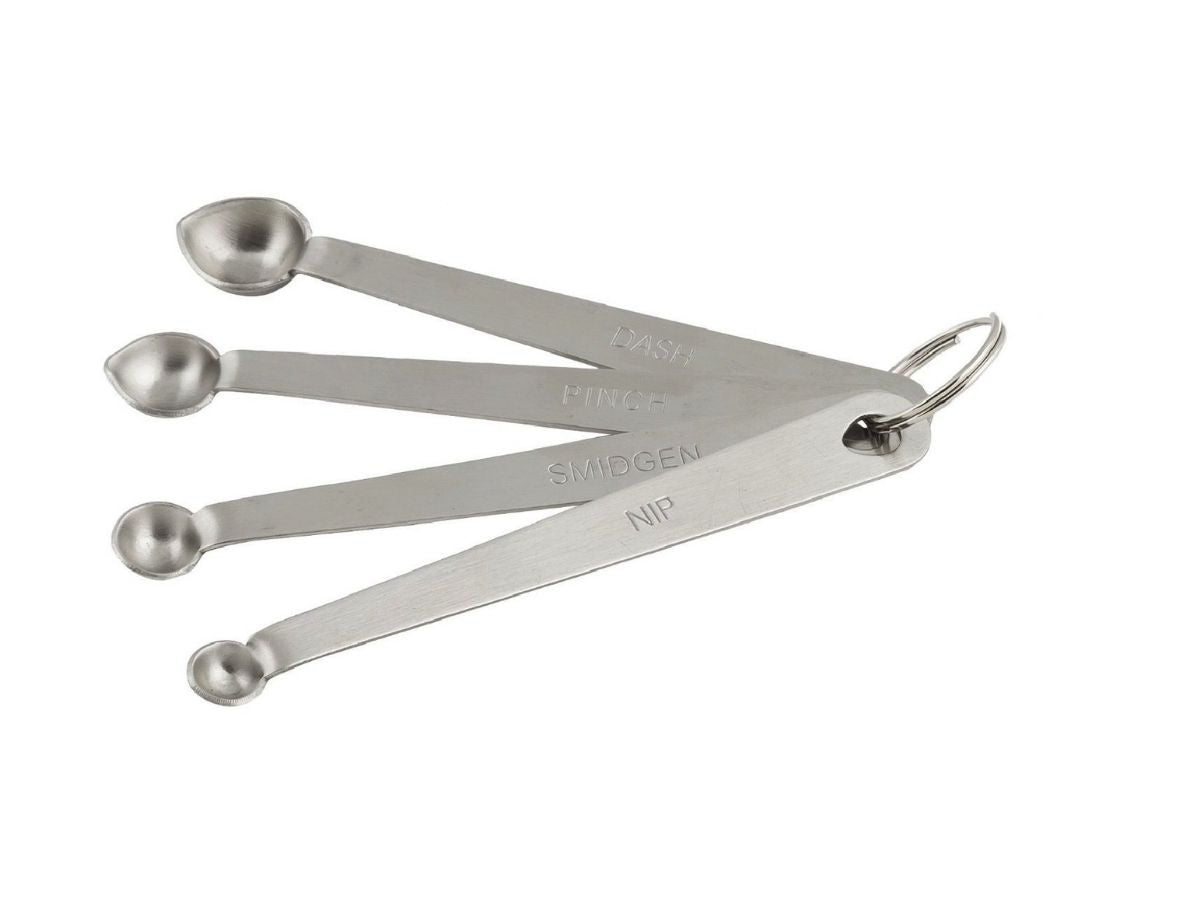
A tiny spoon is used for measuring very small quantities of ingredients.
Nut Spoon

A small spoon with a curved, pointed bowl, is used for cracking open and extracting nuts from their shells.
Olive Spoon

An Olive spoon is typically made from stainless steel with slots or a hole cut from the bottom of a bowl-shaped head to release the liquid from the spoon. A kitchen utensil that is primarily used to remove olives from their liquid while allowing the liquid to easily drain from the spoon.
Olive spoons are also used to lift cherries, cocktail onions, pickled garlic, and other similar condiments from the liquids used to store the foods.
Peanut Butter Spoon

A spoon with a wide, flat bowl, is used for scooping and spreading peanut butter.
Panja Rice Spoon
A Panja is a rice spoon found in India. It is specifically designed for serving rice & mixing rice with seasonings that suit the needs of every household or restaurant.
While the handles offer a firm grip, making it easy to serve or lift food from cooking pots, pans, utensils, containers, and casseroles, the wide bowls can accommodate a good capacity of food on a single-serve.
The end of the handle often has a loop to tie off a string for easy storage.
Rice Spoon

A rice spoon is a spoon designed for mixing rice with seasonings; such spoons are an integral part of the preparation of sushi rice and other seasoned rice dishes.
You may also hear a rice spoon called a “rice paddle,” which is a more accurate reflection of its design, and in Japanese, this utensil is called a shamoji. Stores that stock sushi supplies often carry rice spoons, and they are sometimes included in sushi kits as well.
Some have plastic non-stick surfaces, but most are made from bamboo or other types of wood and sealed with lacquer.
Japanese Rice Spoon (Shamoji)

A shamoji (しゃもじ, 杓文字) or rice paddle is a large flat spoon used in East Asian cuisine. It is used to stir and to serve rice, and to mix vinegar into the rice for sushi.
Shamoji are traditionally made from bamboo, wood, or lacquer, and nowadays often from plastic. The shamoji is dipped in water frequently during use to prevent rice from sticking to it. Some expensive plastic shamoji have non-stick surfaces. Metal is rarely used, as this is more likely to cut rice grains or damage the hangiri wooden tub traditionally used for mixing.
It is said to have been first devised by a monk in Itsukushima, Hiroshima Prefecture[citation needed]. The word is an example of nyōbō kotoba, being derived from the first part of shakushi (杓子, "ladle"), plus the moji (文字, "character") suffix.
Modern rice cookers may include a shamoji in the box, usually made of white plastic.
Shamoji is also used to crush vegetables, such as garlic and cucumbers, as cleavers are used in Western cuisine.
The shamoji has also been a symbol of unity between the mother and wife in Japanese society. In one tradition, it was passed down from one generation to the next to symbolize the family duties that were handed down.
Risotto Spoon

Risotto is a type of rice spoon, but this is the third type of unique rice spoon. These are made of wood and feature a typical bowl where usually (but not always) one corner of it comes to a right angle.
The reason a risotto spoon has a hole in the middle; is so that you can stir it constantly without breaking as many grains as could happen with a solid spoon.
Spaghetti Spoon
A type of serving utensil, commonly made of wood or stainless steel, which is used to hold the long spaghetti noodles enabling them to be easily removed from a pot of boiling water.
The spoon-shaped tool has protruding wood or metal prongs that allow the noodles to be grasped, separated, and placed on a platter after they are removed from the water. Most metal forks have a hole in the center to drain the water as the noodles are lifted out. This tool is also known as a spaghetti server or spaghetti serving spoon.
In the United Kingdom, they sometimes call it a Yurkle.
Skimmer Spoon

A skimmer is a flat, sieve-like scoop or spoon used for skimming cooking liquids or lifting ripened cream from milk, such as a spider used in Chinese cuisine.
Skimmers are widely used in India, Bangladesh, and Pakistan.
In India, the skimmer is known as a "jhara" and is used in different cuisines, most actively in the making of fried foods such as sweets. Local street food stalls use it to make fried food items like bonds and medu vadas. In these countries, different types of skimmers can be obtained based on their use cases.
Sugar Spoon

A sugar spoon is a piece of formal silverware or flatware that is typically a part of a tea or coffee service. It is a spoon similar to a common teaspoon, though it usually has a somewhat deeper bowl and can often have a squared shape or fluted edges.
This spoon is specifically designed for use in spooning granulated sugar into a container, often a cup with tea or coffee, and the shape of the spoon is meant to accommodate a decent amount of sugar and make sprinkling the sugar out of the spoon easier.
A powdered sugar spoon can also be found, though this is not necessarily a true spoon and is instead typically a utensil designed to more effectively sprinkle powdered sugar more.
Fondue Fork and Spoon Set

A set of utensils used for dipping and serving in fondue pots.
Tasting spoon

A tasting spoon is yet another kitchen essential along with aprons and a cutting board. When you invest in a premium quality knife, you want to make sure that your efforts are up to a certain standard.
You can conveniently ensure the quality and taste of your food with it too. In fact, it can also be set down on a dining table as an appetizer spoon or a teaspoon. They're perfect for dessert sampling.
These spoons can not only be used for tasting sauces, soups, and rice while they are simmering on the stove but while mixing dry or wet ingredients, too.
Doing this gives you a good idea of every single ingredient that has been used in your mixture – It is the perfect way for tasting sauces and appetizers before serving them.
Chef-tasting spoons will help you understand intricate ingredients like salt and pepper – Do you need to add another pinch of salt, or should you bring it down a notch? Tasting spoon sets can help home cooks and professional chefs taste many foods at once when cooking large batches of food.
Serving spoon

A serving spoon is a type of kitchen utensil specifically designed for serving food.
It is typically larger than a regular eating spoon and is used to scoop and serve food from a larger container, such as a pot, bowl, or platter, onto individual plates or bowls. Serving spoons are commonly used for serving dishes like stews, soups, casseroles, rice, vegetables, and other similar foods.
Serving spoons come in various shapes and sizes, but they generally have a deep and wide bowl that allows for efficient scooping and transferring of food. They often have a long handle to provide better reach and to keep the user's hand away from the hot food.
Serving spoons is an essential part of a well-equipped kitchen, especially when hosting meals or gatherings where food is shared among multiple people. They are designed to make the process of serving food easier, neater, and more convenient.
Types of Serving Spoons
Solid spoon

There’s no real term for a spoon that has no slots in it, as it’s just usually called a “spoon”, but for the purposes of this guide we’re calling it a “solid spoon”.
Solid spoons are just slightly larger spoons used for serving dishes.
They’re made larger than your average tablespoon as they’re meant to serve larger amounts of food at once. Some solid spoons can even reach up to 10 inches or more in length.
Slotted spoon

Slotted spoons are serving spoons with slots on the head of the spoon.
These slots are usually designed or patterned in a certain way to make the spoon look more presentable and attractive.
The purpose of slotted spoons is to drain any liquids from whatever you scooped.
This can be particularly useful when you want to grab vegetables or meat from a stew without actually grabbing the stew itself.
Ladles

Ladles may not look like spoons at first glance, but they’re essentially the same thing.
Ladles have a small base with which you can scoop up solids and liquids, and the main difference between a ladle and a spoon is the angle of the handle.
Ladles have mostly vertical handles, making them the best type of serving spoon to use when retrieving food from a pot or tall bowl.
Salad servers
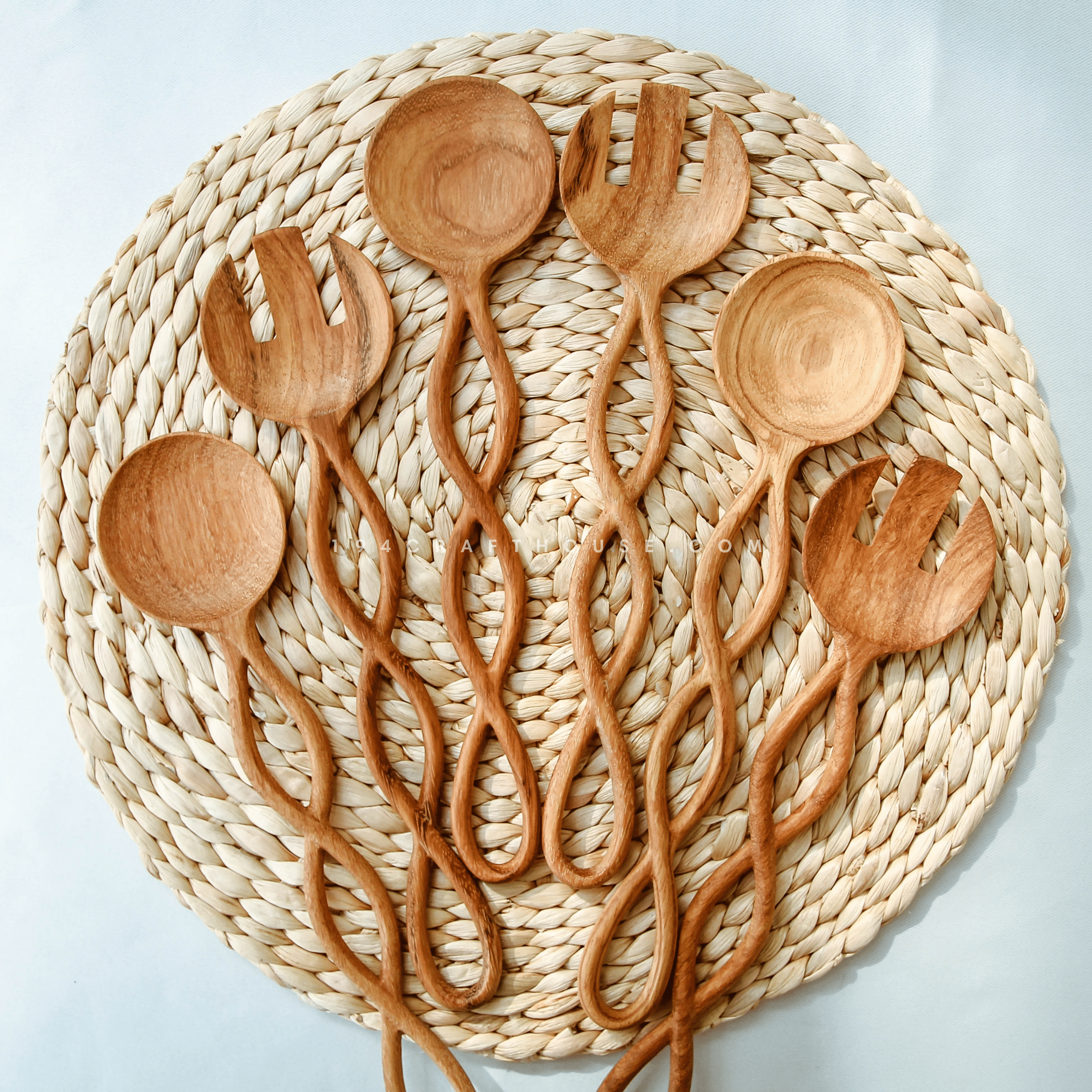
12" Twist Handle Wooden Salad Server Set For Serving
Serving a green salad with grace and competence is actually a tricky thing to do.
Success ultimately depends on how comfortable you are with your salad serving implements.
The classic salad server set usually consists of one spoon-like and one fork-like implement, but these days there are a dizzying number of options to choose from, including spoon, fork, and flat implements as well as the short, chubby salad ‘hands’.
And for some, a pair of tongs or chopsticks is the only way to go.
The basic idea with salad servers is to gently squeeze the portion of salad that you are lifting from the bowl with enough pressure that you can hold the portion together without bruising or causing it to explode all over the place.
For some people, the salad hands offer more control and a wider surface area. Others have mastered the more formal fork and spoon technique.
Tongs are the most utilitarian and are a good choice if you are looking for a multi-tasking tool, but some people find them too informal and, especially if they are metal, too rough on the salad leaves.
In general, I find wooden implements better to work with although I am known to grab the tongs in informal situations.
Stir-Fry Spoon

A wide, flat spoon with a curved edge, designed for stirring and tossing ingredients in stir-fry dishes.
Sauceboat Ladle

A ladle with a deep, rounded bowl and a spout, used for serving sauces from a sauceboat.
Sorbet Spoon

A spoon with a flat, rounded bowl, is often used for serving sorbet or other frozen desserts.
Pastry Spoon

A flat, wide spoon used for spreading or layering pastry creams, fillings, and sauces.
Porridge Spoon

A deep, round-bowled spoon is used for serving porridge or oatmeal.
Yogurt Spoon

A spoon with a rounded, deep bowl, is used for scooping and enjoying yogurt.
Zester Spoon

A spoon with a serrated or rough edge, is used for scraping zest from citrus fruits.
Special Use Types of Spoons
Anointing Spoon

An anointing spoon, also known as an anointing ladle or chrismatory spoon, is a ceremonial and religious utensil used in various Christian religious traditions, particularly during the sacrament of Anointing of the Sick and other liturgical rituals.
The anointing spoon is typically made of metal, often silver or gold, and is designed with a long handle and a small bowl or vessel at the end. It is used to hold and administer holy oil, such as chrism or anointing oil, which is used in the sacraments and rituals of the church.
During the Anointing of the Sick, for example, a priest or minister may use the anointing spoon to apply a small amount of oil to the forehead or hands of a person who is ill or in need of spiritual healing.
The use of anointing spoons varies among different Christian denominations, but the general purpose is to facilitate the respectful and reverent administration of holy oils during religious ceremonies.
The design of the spoon and the specific rituals associated with it can vary, but the concept of anointing with oil has deep symbolic and spiritual significance within Christianity.
Apostle Spoon

An apostle spoon is a spoon (usually silver or silver-plated, but sometimes of other metals, such as pewter) with an image of an apostle or other saint as the terminal of the handle, each bearing his distinctive emblem.
Apostle spoons were particularly popular prior to the Reformation.
They symbolize the Last Supper of Christ in the company of the Apostles.
Apostle spoons were especially popular in England but were also found in large numbers in Germany.
Baby Spoon

A baby spoon is a small spoon designed for feeding infants and young children solid foods, with a short handle and shallow, rounded bowl.
Candle Snuffer Spoon
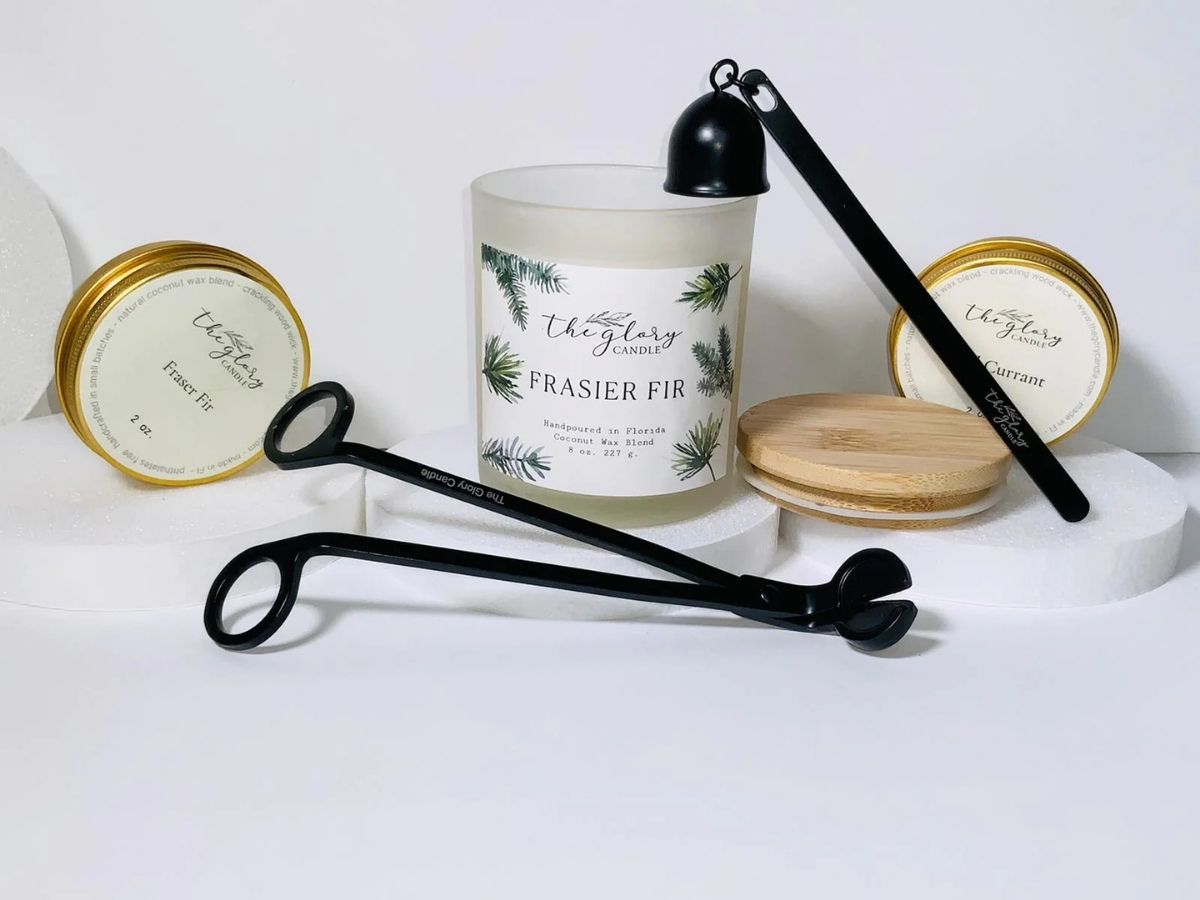
A spoon with a snuffer on the end, used for extinguishing candles.
Cochlear Spoon

A cochlearium (plural cochlearia) was a small Roman spoon with a long tapering handle.
Cochlearia has been found in a number of Roman sites from the 4th and 5th centuries CE, including the Thetford and Hoxne Hoards.
The word cochlea literally means spiral or snail shell, leading many to conclude that the spoon was designed so that the handle could be used to extract snails or cockles out of the shell.
Ear Spoon/ Earpick/ Ear clean

Ear picks, also called ear scoops, or ear spoons, or earpicks, are a type of curette used to clean the ear canal of earwax (cerumen). They are preferred and are commonly used in East Asia, South Asia, and Southeast Asia because Asians tend to develop dry ear wax.
In Asia, these are traditionally made from bamboo or precious metals such as silver or gold, but more commonly now, from stainless steel or plastic. European ear scoops produced up to the early 19th century were made from either bronze or precious metals such as silver.
The use of ear picks to remove wax is discouraged by some health professionals for fear of damaging the ear and causing infections. It has also been attributed to impacting ear wax into the ear canal, making it more difficult to remove.
Bad Stuff Spoon

I hesitate to mention these but for the sake of completion, I will. These are tiny, meant to aid the insufflation of bad stuff. I'm sure you will get it. I'd rather not describe it further.
Lovespoon
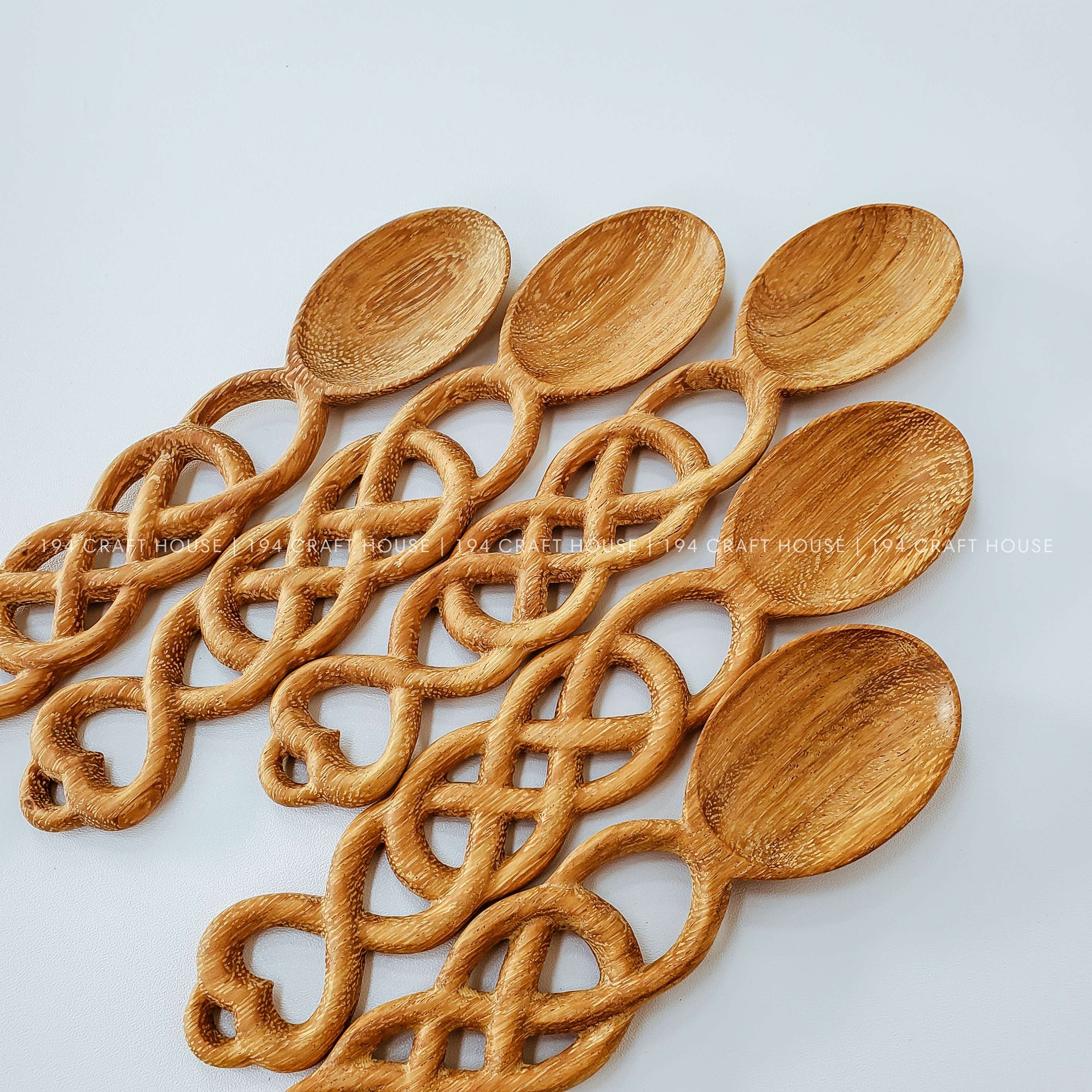
A lovespoon is a traditional decorative wooden spoon that has historical and cultural significance, particularly in Welsh and some European traditions.
Lovespoons are intricately carved and often given as tokens of affection, love, and friendship. They have a rich history dating back centuries and are considered both a romantic gesture and a form of artistic expression.
Lovespoons are typically hand-carved from a single piece of wood and feature elaborate designs, symbols, and motifs.
The carvings can vary widely, but common elements include intertwined hearts, chains, keyholes, and other symbols representing love, unity, and commitment.
Each element of the design may carry a specific meaning or message, making each lovespoon a unique creation.
In Wales, lovespoons were historically crafted by young men as a way to showcase their woodworking skills and present them as gifts to the women they were courting. The intricacy of the carving often reflected the depth of the man's feelings for the woman. If the woman accepted the lovespoon, it symbolized her acceptance of the man's affection. Lovespoons were also given for other occasions, such as weddings, births, and special anniversaries.
Lovespoons continue to be cherished items today, both as traditional keepsakes and as works of art. They are often displayed in homes and are popular souvenir items in regions where the tradition is upheld. The intricate craftsmanship and heartfelt sentiment behind each lovespoon make them endure symbols of love and devotion.
Maidenhead Spoon

Maidenhead spoons seem to have made their appearance in the late fourteenth century.
That some were indented to represent the Virgin Mary is revealed in an inventory of Durham Priory, in 1446, in which "ij coclearia argentea at deaurata unius sectae, cum ymaginibus Beatae Mariae in fine eorundem" ("two partially gilded silver spoons with the image of the Holy Mary at their ends"), and again in a much later of 1525 in which spoons "knopped with the image of our Lady" are mentioned.
In the present example, the Virgin, dressed in the fashion of the first half of the fifteenth century, wears an elaborate rolled headdress and a dress with a V-shaped neckline and a raised collar.
Side Notch Spoon

A French sauce spoon looks much like a regular spoon with some noticeable differences.
It has a thinner edge, a flattened bowl, and a distinctive notch on one side of it. The size and shape is most similar to that of a dessert spoon.
The French sauce spoon design helps scoop a sauce from a plate easily, without tipping the plate. The purpose of the notch on the side is intended to allow oil or fat to drain away from the sauce, or function in a way that’s comparable to the fish knife.
Souvenir Spoon

A souvenir spoon is a decorative spoon used as a memento of a place or to display as a 'trophy' of having been there.
The spoons may be made from a number of different materials such as sterling silver, nickel, steel, and in some cases wood.
They are often hung on a spoon rack and are typically ornamental, depicting sights, coats of arms, associated characters, etc. The year the spoon was made may be inscribed in the bowl, or on the back. The entire spoon, including the bowl, handle, and finial, may be used to convey the theme.
The first souvenir spoons in the United States were made in 1890 by Galt & Bros., Inc. of Washington D.C., featuring the profile of George Washington.
Although the George Washington spoon was one of the most popular designs, relatively few were made by Galt & Bro. remain in circulation.
One year later, a souvenir Salem Witch spoon was made and sold seven thousand copies. It was created by Daniel Low, a jeweler in Salem, Massachusetts after he saw souvenir spoons on vacation in Germany. The Witch Spoon is given credit for starting the souvenir spoon hobby in the U.S
Uddharani

This is the ritual spoon, numerous times magnified, with which pure offerings are made.
This spoon called 'Uddharani' has the Shiva Linga guarded by a seven-hooded cobra at the base of the long neck. Sitting in reverence in front of the Linga is Nandi, Shiva's Vehicle.
The vigorous bull, the Linga, and the coiled serpent are all symbols of the Great Lord's sexual energy.
According to Brahmanical literature, Linga is the sign of the transcendental, unseen Shiva and symbolizes Shiva's capacity to produce life itself.
Besides the symbols apparently associated with Shiva, the neck has other auspicious symbols like the pair of feet, the sun, the moon, etc. From their form to their decorations, all spell sacredness.
Caviar spoon

The material from which these are made is their distinguishing feature.
The Caviar Spoon is usually made of pearl, animal horn, wood, or gold because they don't affect the taste of the caviar-like silver would.
Because of the size and shape of the containers in which caviar is stored, these are frequently much smaller ( approximately 3 to 5 inches in length) than standard spoons. To prevent giant scoops, their bowls are shallow and oval in shape as small amounts of caviar are required at a time.
Grapefruit spoon or orange spoon (Citrus Spoon)

A grapefruit spoon is a special utensil intended to help carve and scoop grapefruit flesh from the rind with ease and precision.
Roughly the same size as a standard teaspoon, a grapefruit spoon features a more tapered headline with sharp, serrated teeth. The sharp edges paired with a pointed tip make them perfectly designed for scooping out individual segments of fresh grapefruit.
The main benefit? A grapefruit spoon is multifunctional—it combines two utensils in one. It eliminates the need to first use a sharp knife to loosen the grapefruit segments.
Horn spoon

These are made from animal horns, largely with two traditional usages.
The first is they are perfect for eating boiled eggs because they won't tarnish over time from being exposed to the sulfur in the yolk (like silver will tarnish).
The second is for caviar, though less prevalent than other materials because it doesn't interfere with the delicate taste of roe.
Melon spoon

Melon ballers are utensils to make balls of melon from a scoop with a diameter from around 1 centimeter to 3 centimeters (about 3/8 inch to 1 inch). They are generally used to make fruit salad.
Melon balls are made by pressing them into the melon's flesh and rotating them. It can also be used to cut other soft fruit and ice cream. The diameter of a melon baller's bowl varies from around 1 centimeter to 3 centimeters (about 3/8 inch to 1 inch), and it is typically made of stainless steel with a handle of wood, metal, or hard plastic. Some varieties have a handle in the middle and a different-sized bowl on each end, and the bowl typically has a small hole in the middle to allow air and juice through.
It is more commonly known as a prepping utensil. Melon ballers can be used for a variety of melons; like watermelon, cantaloupe, or honeydew. They typically are multifunctional utensils. They are also used for trying small bits of other foods such as ice cream.
M1926 spoon

The M1926 Knife, Fork, and Spoon set was used by all branches of the US military including the Army, Airborne, Armoured and Infantry, etc. It was issued with two-piece mess tins and was used through WW2 and Vietnam.
Seal-top spoon

These were popular in England from the late 16th century through the 17th century. They're made of silver, and the end of the handle culminates in a circular seal, much like the Japanese hanko stamps.
They could be used to seal letters with wax, but simply became a common decorative method for utensils.
Feature of spoons
Engraved spoon

Custom Engraved Wooden Spoons And Forks Personalized Gift
If you want to give somebody a very special gift that will stand out from anything else that they have been given, then a personalized spoon is a wonderful way to do this.
Not only is an engraved spoon ideal as a wedding gift to commemorate a couple’s new last name, but it also makes a very fun gift for somebody who tends to enjoy certain meals or desserts, such as a coffee spoon.
Set of spoons and forks

To ensure that all of your spoons look the same, it’s a good idea to buy a set of spoons. This means that you won’t ever have to worry about whether or not the spoons that you choose for your meal will match, and it will make it significantly easier to set a formal table.
Usually, there will be a set of spoons and forks for cooking, a set of spoons and forks for eating, a set of spoons and forks for decoration, a gift set of spoons and forks, and a set of kitchen spoons commonly known as a spatula and spurtle utensils set.
Shaped of spoons and forks
It is possible to buy spoons that have bowls in interesting shapes instead of ones that are rounded.
Buying these spoons is a fun way to express your personality or to make your meal more interesting, and it is a great way to show others how you feel about them.
If you are interested in giving someone a gift to show them that you care, then spoons with bowls in the shape of hearts are wonderful presents that will make your recipient think of you every time he or she uses them.

Sunflower Handle Wooden Spoon and Fork Set

Wiggly Handle Wooden Heart Spoon

There are also many other special-shaped spoons, such as fish spoons, turtle spoons, branch spoons, and leaf spoons, so many shapes that you can find to suit your taste.
Above is a summary of the types of spoons and how to use spoons. They are very diverse and used according to each person's usage as long as we find the most suitable and comfortable.
You can share with us the types of spoons you find missing by commenting below. We will update more whenever we have the latest information about the spoons.


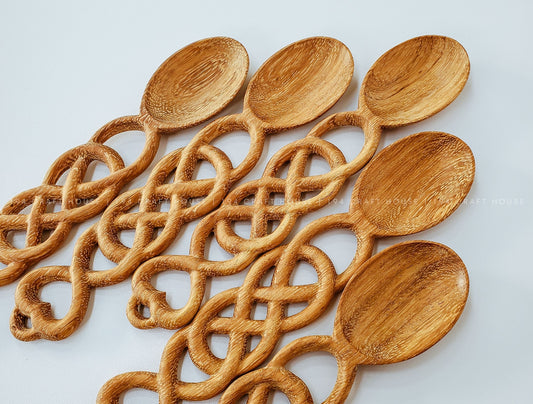
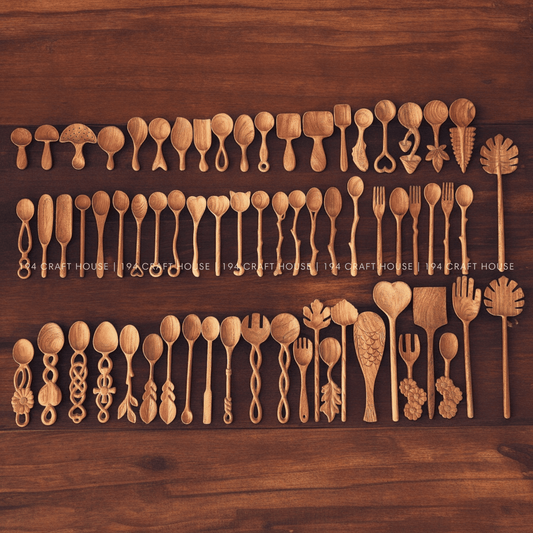
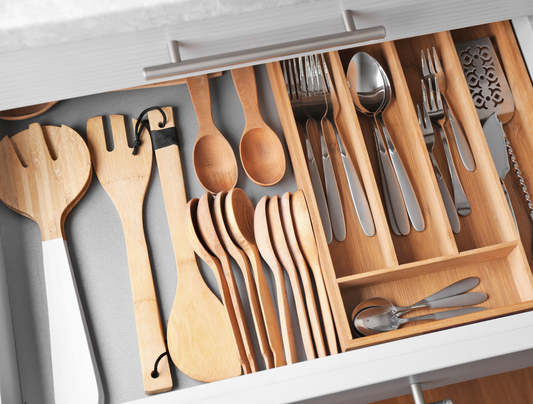
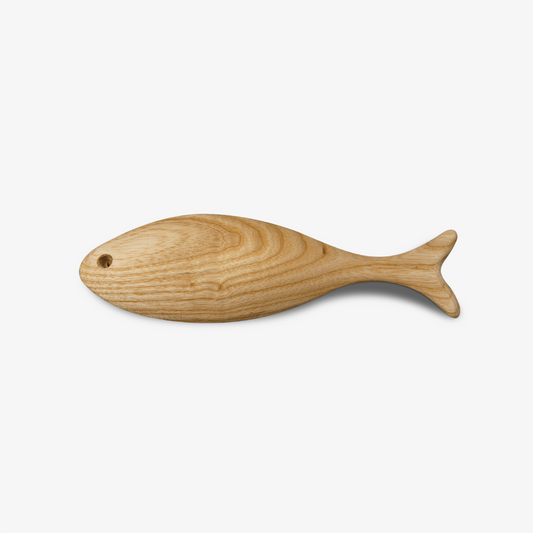
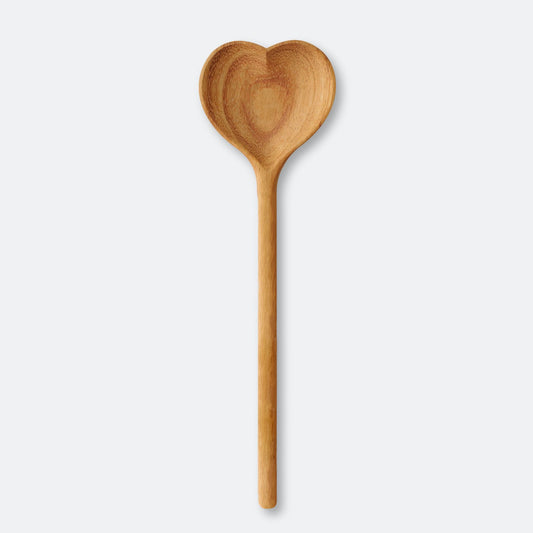
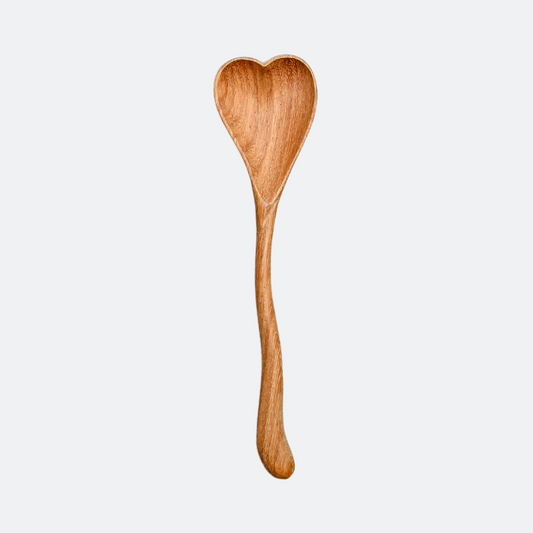
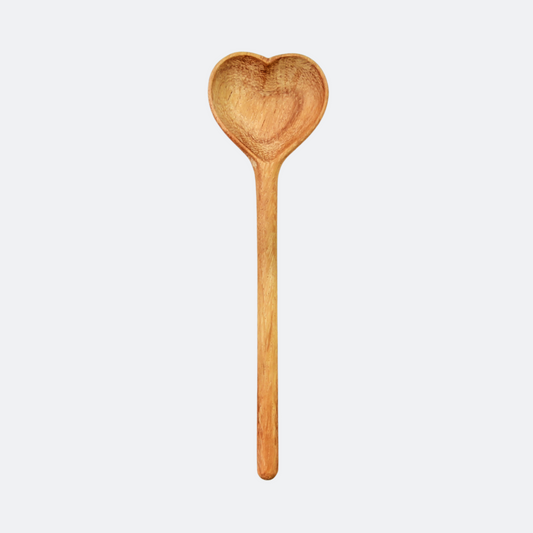
7 comments
pic 19 ( cutty spoon) was used for loose tea, which was bought origanaly in a large tin,later in paper packs, cutty spoon was used for the correct amount of tea for a brew, i am 65 yrs old, but remember back in the day my gran having one
pic 19 ( cutty spoon) was used for loose tea, which was bought origanaly in a large tin,later in paper packs, cutty spoon was used for the correct amount of tea for a brew, i am 65 yrs old, but remember back in the day my gran having one
Holy cow Batman!
I had no idea that there is so many types of Spoons… Then again I have lived on 4 continents and have collected about 35 different types of Spoons and never knew they’re proper names! Thanks for the information next dinner party we’re going to play guess the name and capabilities of said spoons…
Regards,
CDR JØHN EHRHART RN
I have a set of 6 smallish Sheffield EPNS spoons…with a strange shaped bowl. The end of the bowl is bent up at right angle so that the tip of the spoon is flat! I can’t imagine how..(or for what) this was used? The spoon handles have an angular shape ending with a red colored ball…looks a bit like an apple! Any ideas?
There are too many types of spoons for us to know all about them, I will save this article for further reference. Thank for sharing!!!